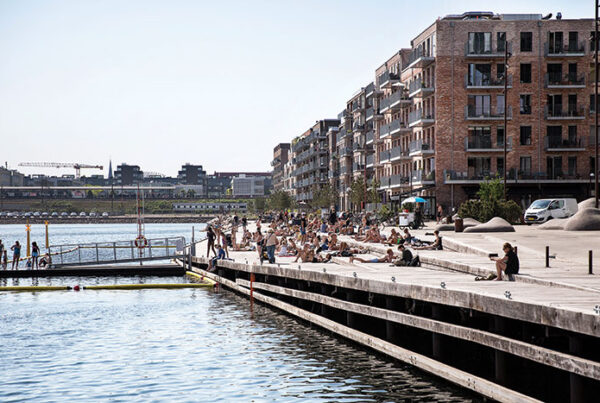
Transparent Energy
Property owners are setting ambitious goals to reduce their carbon footprints, with a growing number now aiming for carbon-neutral or net-zero-carbon operations in the next decade. The challenge, especially for small and medium-sized property owners, is mapping out a cost-effective strategy that will drive results.
Some institutional property owners are switching to on-site solar and wind power generation wherever possible. But those options are often out of reach for many property owners for myriad reasons, such as cost, timing, or logistical challenges of adding on-site solar or wind to a particular property.
Physical power purchase agreements (PPAs) and financially settled “virtual” PPAs (VPPAs), for example, can be an effective strategy to reduce carbon footprints by contracting directly with off-site generators of renewable energy. However, PPAs and VPPAs can be highly complex and operationally challenging to navigate, and they can increase budget risks. Even in cases where an on-site solar installation or a PPA does make sense, a company often will need a bridge to achieve 100 percent green power to meet short-term goals. Because a large-scale renewables project can take one to three years to develop, contracts like renewable-energy-certificate purchases can act as that bridge.
Purchasing renewable energy through online auctions is one way to procure greener energy for properties quickly, efficiently, and in the exact amount that serves both operational and environmental, social, and governance (ESG) needs. Online auctions promote competition among energy providers, establish a fair and transparent live market in which transactions take place, and reward buyers with the best price.

The results of a recent reverse energy with 12-, 24-, and 36-month contracts being bid down by competing providers. (Transparent Energy)
In an auction, energy providers bid against each other to supply energy. Unlike a paper bid, an online auction allows each supplier to see the leading bid in real time and have an opportunity to beat it—often leading to hundreds of bids being offered, driving down the price. The open procurement process also allows companies to compare a variety of options and select those that best fit their needs.
Brokerage Firms Provide Ease of Access
Such reverse auctions help properties access green power for a very minor incremental cost as compared to traditional power. For example, Transparent Energy, an energy brokerage and consulting firm, assisted a client with an online auction to source power for a 6 million-square-foot (557,000 sq m) commercial portfolio in New York City. The client ended up purchasing 52 million kilowatt-hours of renewable energy for delivery over two years with renewable energy credits (RECs) that would cover 100 percent of consumption; the deal included a mix of wind, solar, and hydropower equivalent to 18,000 metric tons of carbon dioxide emissions. The RECs purchase was included in the auction for electricity supply to the properties.
Eight suppliers took part in the auction, submitting a total of over 200 individual bids. That competitive process reduced the supply costs by 8 percent, effectively covering the premium for the renewable energy.
“Renewable energy comes at enough of a premium. Using competitive, transparent, and rigorous processes for procurement can keep those premiums to a minimum and drive the best outcomes,” says David Braun, vice president, partnerships and renewable energy projects, at Transparent Energy.
How to obtain power from renewable sources has become a key question every organization is facing. Property owners and managers do not have to take on the responsibility of developing and running an auction on their own. Instead, they can work with a third-party provider such as Transparent Energy, a ULI Greenprint Innovation Partner.
“For more than a decade, large portfolio owners have been experiencing the benefits of Transparent Energy’s online auctions, which have delivered massive energy cost savings and the security of a fair and transparent procurement process,” says Dustin Scarpa, managing partner and cofounder of Transparent Energy. “This is a solution tailor made for the challenges of making renewable energy more competitive and transactable at scale while meeting the individual needs of real estate companies.”
Transparent Energy has worked on more than 10,000 online auctions that range from individual properties to large commercial real estate portfolios. In one instance, the firm helped a property owner negotiate a wind-supplied retail contract for a 260,000-square-foot (24,000 sq m) office building in the Dallas/Fort Worth metro area that used about 3,000 megawatt-hours per year of power. Transaction Energy ran an auction that drew bids for multiple products—traditional power, a solar-supplied power contract, and a wind-supplied power contract, with terms ranging from 24 to 98 months, that provided the buyer with substantial price discovery.
The winning contract was a 98-month, fixed-price, 100 percent wind-supplied power contract, which had pricing below the 12-, 24-, and 36-month traditional nonrenewable power contracts the buyer typically would have chosen. The wind-supplied contract has a price 2 percent higher than for a contract with a traditional power source over the same term, costing only $4,000 more per year. The retail supplier provides the power supply to match the load as well all wholesale power functions.
Auctions Offer Efficiencies
Google is one major renewables purchaser that has embraced the online auction process. According to a Google case study, “Accelerating Renewable Energy Purchasing through Auctions,” the company was looking for a more efficient way to match 100 percent of its global electricity consumption with renewable energy. Its historical procurement methods involved issuing one-time requests for proposals specific to individual regions, which was a complex and time-consuming process. The company decided to streamline its renewable energy procurement process by running reverse auctions for wind and solar projects, allowing it to source, negotiate, and sign a large wave of renewable energy deals in a single global push.
Companies do not have to be the size of Google to benefit from online auctions. Real estate companies across the board are recognizing the efficiencies of using the online auction process to procure renewable energy.
“Procuring a virtual PPA . . . through a traditional paper process is an antiquated effort, which adds time and stress to both consultant and client teams,” says Daniele Horton, founder and chief executive officer of Verdani Partners, a leading ESG management consultant for real estate. “In addition to speeding up the timeline and providing additional transparency, an online auction can help spread awareness of VPPAs faster, as well as increase accessibility. This is a win/win to help increase adoption of power from renewable energy sources and help companies working toward net-zero targets to achieve their carbon reduction goals faster.”
Online auctions are growing along with recognition that they offer a solid business case for energy users. Key advantages provided by online auctions provide include the following:
- Supplier scoring and contract vetting. A strong pre-auction process leading up to the actual event allows for supplier scoring and contract vetting, as well as added efficiency and speed of procurement.
- Broader supplier pool. When energy buyers have more suppliers competing for their business, the heightened competition results in better prices. Traditional paper-based procurement processes buckle under the weight of each added supplier. Online auctions attract and welcome bidders.
- Heightened competition and price discovery. Having more suppliers bidding for business is key, but so is the competitive auction process itself, in which each supplier sees the leading bid in real time and has an opportunity to beat it. The auction process also enables the buyer to test the market for various products and terms, such as terms of 12, 24, and 36 months for an all-green, 50 percent green, and 25 percent green product. As suppliers bid on these products and terms, it reveals true price discovery and allows the buyer to select the right product and term based on its pricing and sustainability needs.
- No hidden fees. As an added benefit, the cost of the auction is included in the winning supplier’s fee. The buyer pays no out-of-pocket costs and can complete the transaction only if satisfied with the price received, which essentially provides a risk-free and cost-free procurement method.
- A repeatable, scalable, and transparent process with a bullet-proof audit trail. Buyers get to see every bid from every supplier on every product and term. These bids are recorded in an auction summary that helps sustainability, energy, and other managers report back to stakeholders armed with facts that substantiate the procurement decision. The automated and objective nature of the auction approach makes it easily repeatable, enabling large organizations to standardize energy and renewable energy procurement using this approach across their portfolio.
The growing momentum behind initiatives to address climate change and carbon-reduction goals will continue to drive massive investment in renewable energy across the built environment. Real estate companies seeking to accelerate their transition to low- or no-carbon solutions have had many tools at their disposal to do so, including large-scale PPAs, improved energy efficiency, and building automation. They now have an important new tool, online auctions, which can fast-track their aspirations and help them get greener faster—all while getting access to the most competitive prices available in the market.



